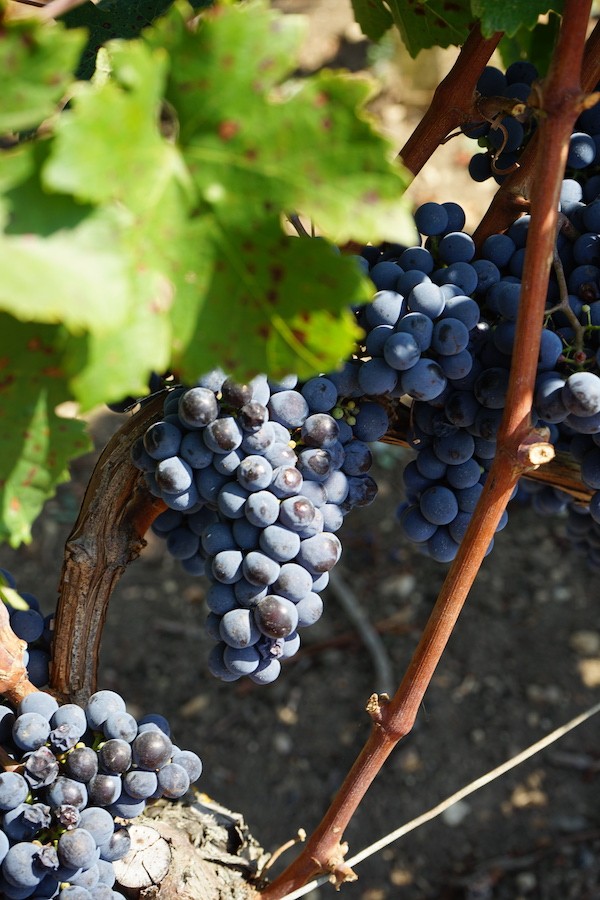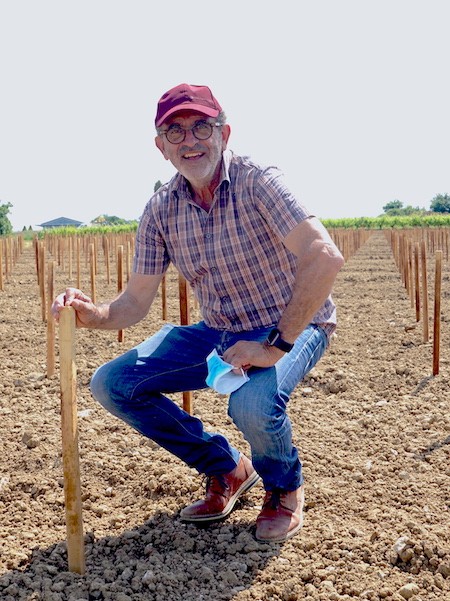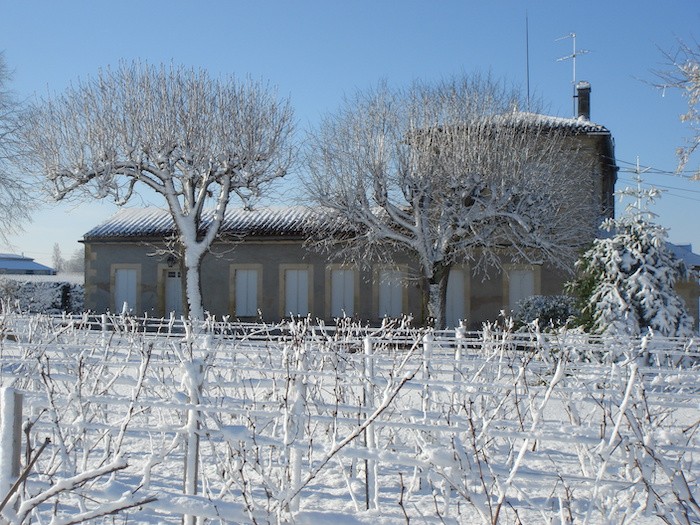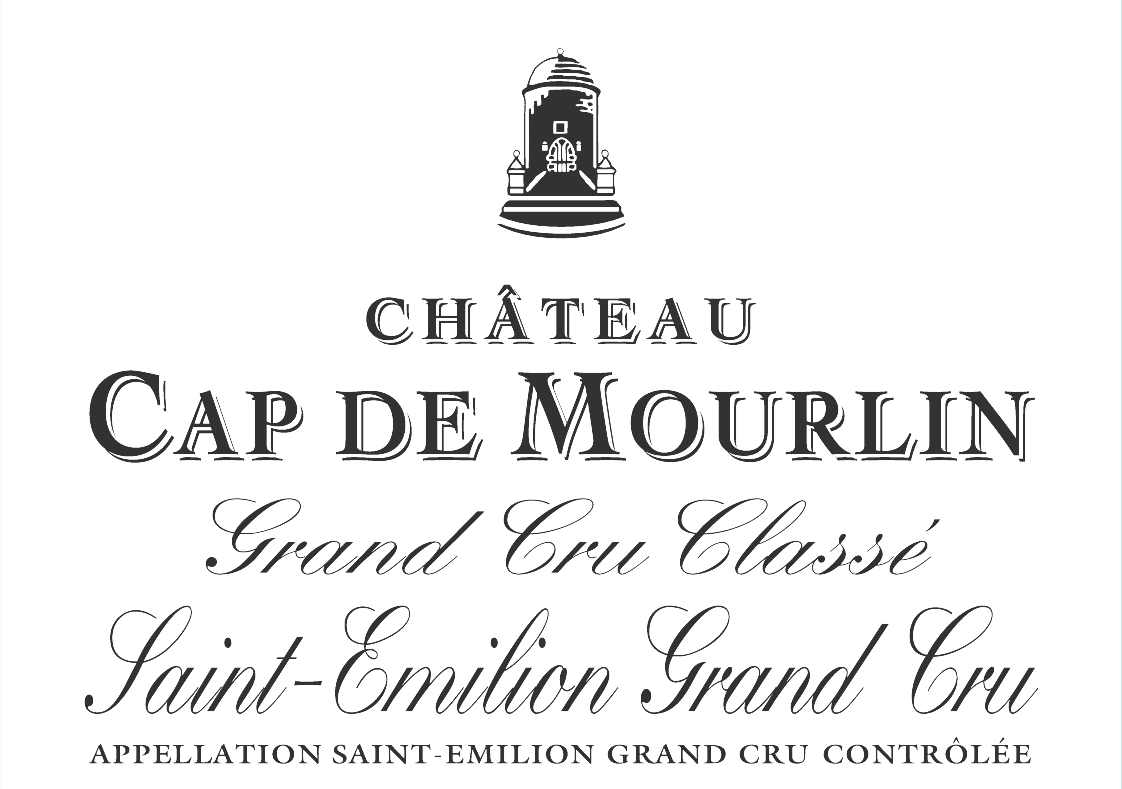
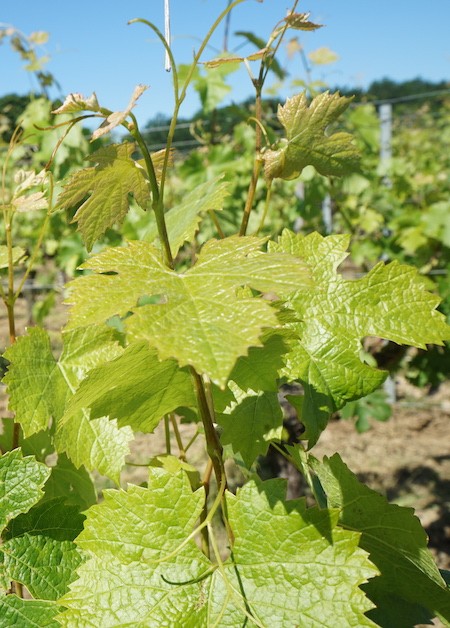
Chateau Cap de Mourlin, a unique vineyard
Located on the northern slopes of Saint-Émilion, Château Cap de Mourlin is planted on a clay-limestone and clay-silica soil. Extended over 14 hectares of vineyardsThe vineyard was founded in the 16th century. Directed by Jacques CapdemourlinChâteau Cap de Mourlin continues its rise to become one of Saint-Emilion’s leading names.
Near the City
Located on the northern slope, one kilometer from the medieval city of Saint-Emilion, the vineyard extends all around the property allowing to admire the vines.
A landscape classified by UNESCO
Classified as a world heritage site by UNESCO, as a cultural landscape, Saint-Emilion is a remarkable example of a historic wine landscape.
A terroir
Château Cap de Mourlin enjoys a climate, a geology and a relief favorable to the culture of an exceptional vineyard.
A VINEYARD
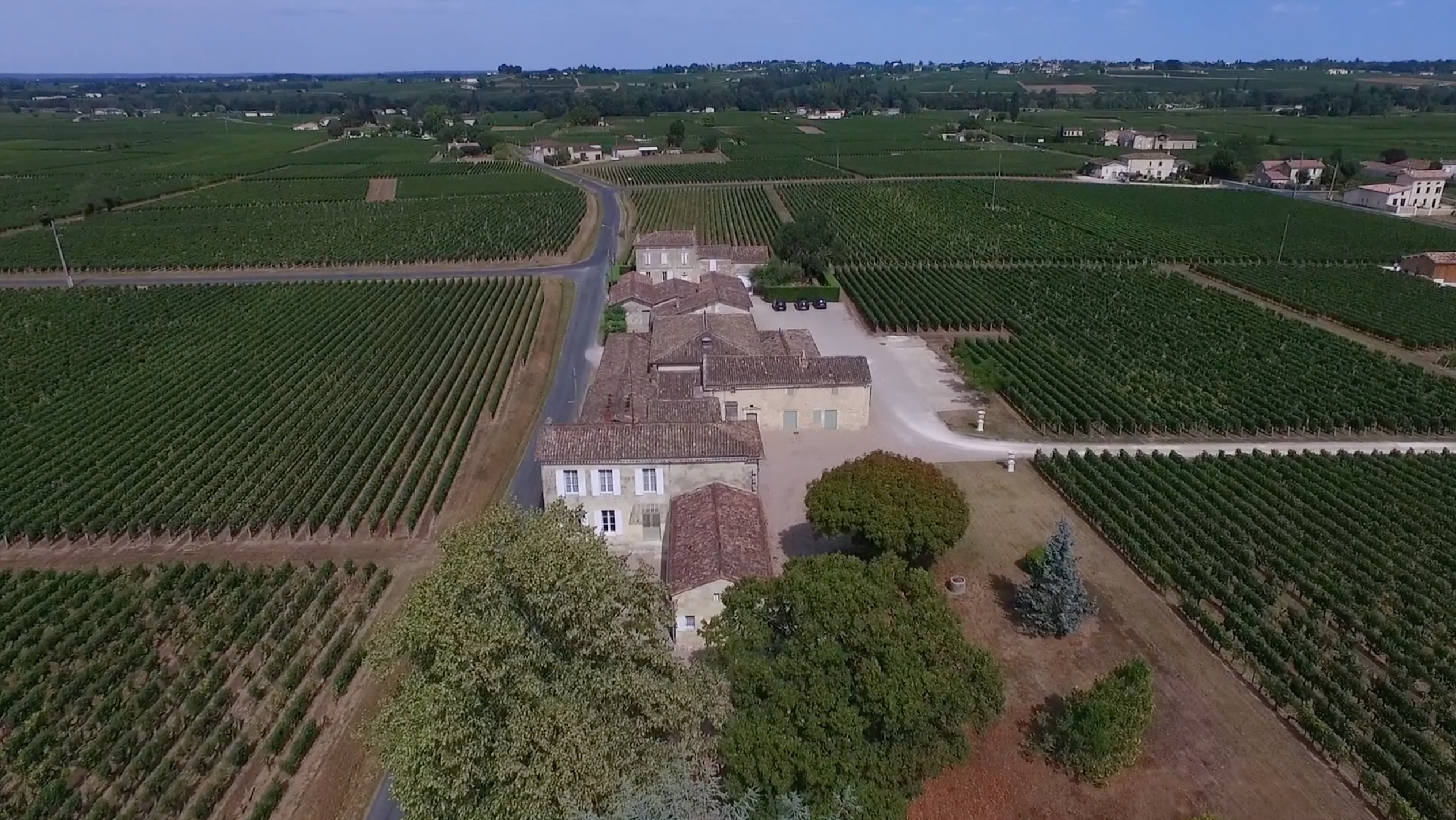
The Cap de Mourlin vineyard surrounds the property. 7 hectares on each side of the road.

Each plot was identified by GPS. Visitors can spot the grape varieties as they stroll through the vineyard.
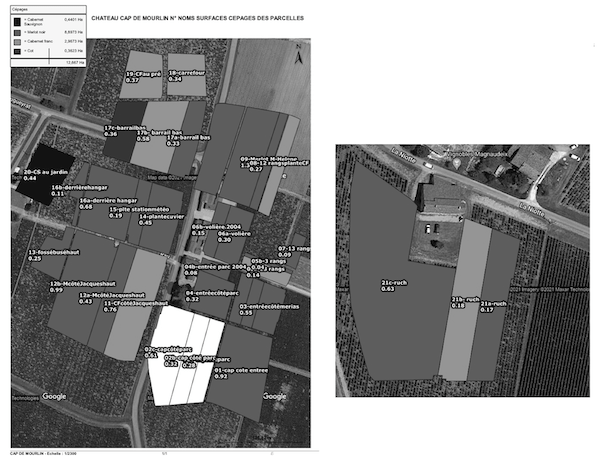
Each parcel has a specific terroir, with a grape variety, and an age of plantation. The vineyard surrounds the new cellar allowing the harvest to be brought in quickly for a better sanitary state of the harvest.
A LAND
Château Cap de Mourlin benefits from an exceptional terroir, a mixture of clay-limestone and clay-siliceous soil. This soil offers the best conditions for the grape varieties to flourish. Each soil gives a typicity to the wine. It is the quality of the soils, supplied with water in a regular and stress-free way, which gives the wines of Saint-Emilion their richness and complexity.
A CLIMATE
The choice of grape varieties was made according to the soil and climate. Located on the right bank of the Dordogne River, north-east of Bordeaux, the Saint-Emilion region enjoys a warm temperate oceanic climate. Moderate temperature differences between summer and winter. Saint-Emilion has an average temperature of 13.7°C throughout the year. The average annual precipitation is 788 mm with a good distribution of rainfall throughout the year, making this region a privileged place for the cultivation of vines. The grapes reach a perfect maturity thanks to the warm summers and the beautiful back seasons.
The vines have developed an important root system allowing them to draw their nutrients from deep within the soil. The complementarity of its different terroirs brings structure, aromatic complexity and finesse to Château Cap de Mourlin.
The vineyard manager takes regular rainfall and temperature readings to monitor climatic changes in the vineyard. The objective is to adapt plantations to climate change in the long term. All these conditions give the wine its character, spicy and complex.
the grape varieties
Cabernet Franc
Cabernet Franc is a red grape variety grown mainly in the Bordeaux region.
Cabernet Franc ripens a little earlier than Cabernet Sauvignon.
Its small berries produce wines rich in polyphenols, whose ageing ability and aromatic finesse are highly appreciated.
They have a very expressive nose and a pronounced tannic structure.
It gives a wine with aromas of tobacco, raspberry, black currant and violet.
25%
merlot
Merlot is a grape variety whose name comes from the blackbirds who particularly appreciate the grapes in its bunches.
It is grown on cool clay-limestone soils. It is the majority grape variety in the Saint-Émilion appellation.
It is fairly hardy, but due to early bud break, it is susceptible to spring frosts. It appreciates soils that keep a little freshness.
It also matures earlier than Cabernet Sauvignon. The Merlot harvest can take place two weeks before the Cabernet Sauvignon harvest.
Because of its higher sugar content, Merlot is sweeter in the mouth
Merlot is a grape variety that produces round and smooth wines with black fruit aromas such as black cherry, blackberry and black currant.
65%
Cabernet Sauvignon
In the 17th century, French winemakers crossed Cabernet Franc and Sauvignon Blanc to create a unique grape variety with special flavors and thick, hard skins that facilitate growth and harvesting.
Cabernet Sauvignon is the most common black wine grape variety in the world after Merlot
It gives powerful and tannic wines with aromas of small black fruits when young (blackcurrant, blackberry), vegetable aromas of bell pepper when it lacks maturity and aromas of musk and leather when it evolves.
10%
THE SEASONS

winter
With the drop in temperature, the vine enters vegetative dormancy.

The summer
Season of flowering, then of fruiting, summer allows the formation of beautiful bunches
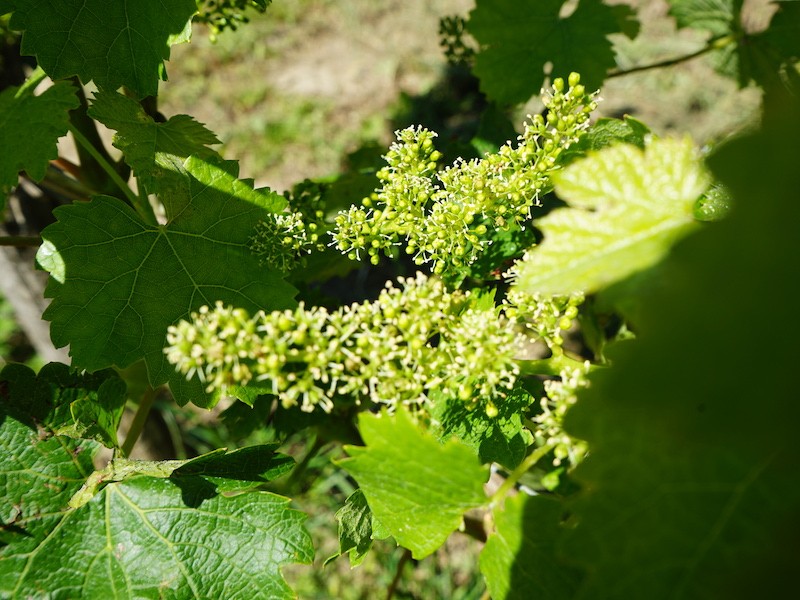
THE SPRING
The vineyard wakes up at the same time as the first heat appears.
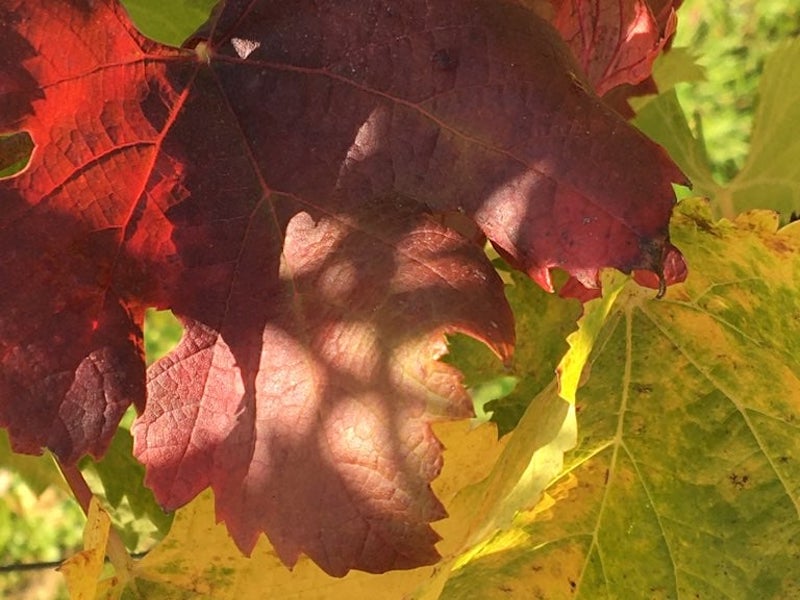
FALL
With the end of the summer comes the harvest period, the link between the cultivation of the vine and the wine making
The vine is at rest during the winter months. The oceanic climate protects the vines from the extreme cold. However, sometimes a few snowflakes make their appearance, transforming the landscape in a magical way.
The natural cycle of the vine begins in November at the end of the harvest. The leaves fall as soon as the first cold weather arrives. Sugars are stored in the roots. It is the beginning of the winter period, a delicate period for the vine. From November to March, the vine enters a period of sleep. The plant saves as much energy as possible and the sap is concentrated in the vital parts in order to face the weather conditions and survive the cold, especially the possible frosts. The vine is at this time in vegetative rest and the sap has descended. It is therefore possible for the winegrower to prune it because the wood is easier to break.


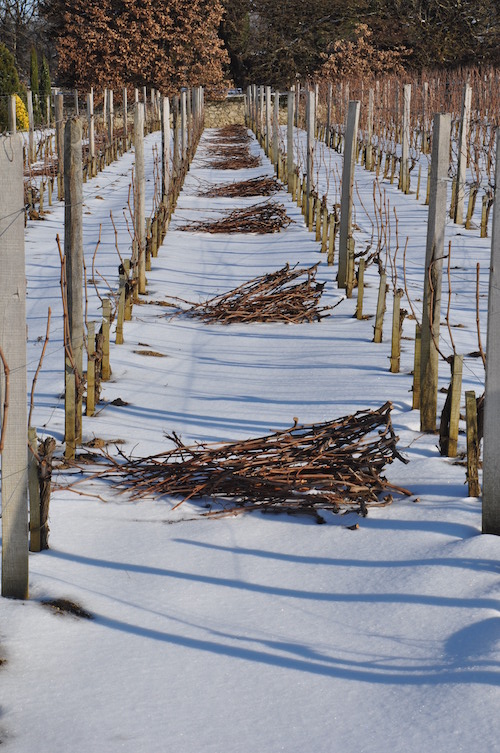
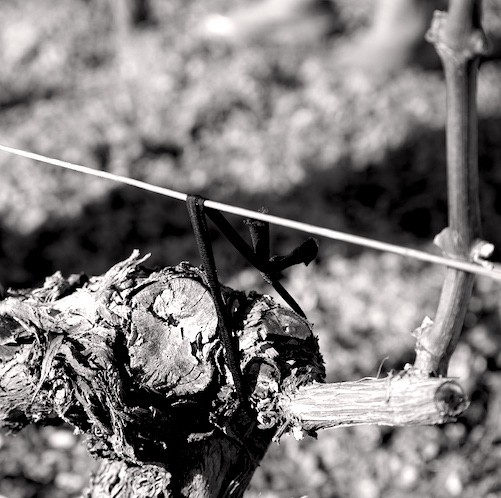
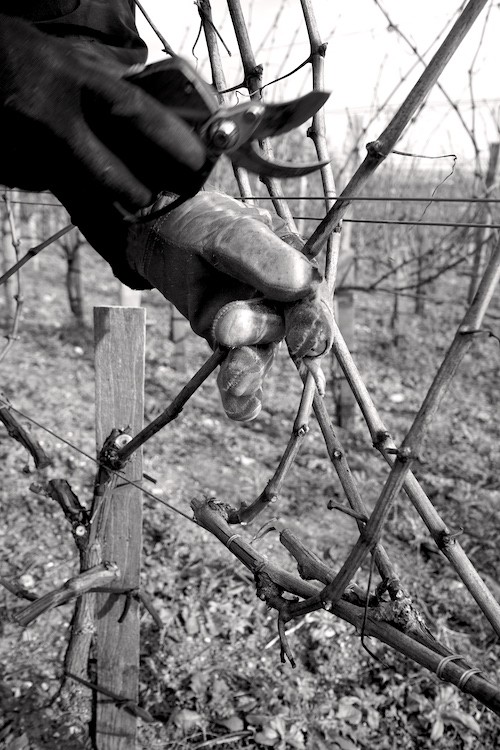
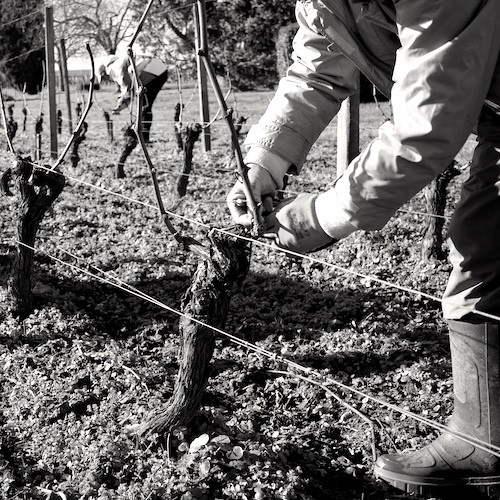
After its winter rest, the vine wakes up with the first rays of the sun warming the soil and activating the sap in the vine stock.
The budburst
The buds make their appearance surrounded by their scales “the bourre”. Tiny leaves point out.
The buds increase in volume, their scales spread, revealing the villi (called “bourre” or “cotton”) that protected them from the winter cold, and then the first signs of the first leaves.
In viticulture, the budburst of the vine can be divided into three distinct stages: bud in the cotton, green tip (the tip of the shoot can be observed), exit of the leaves gathered in rosette.
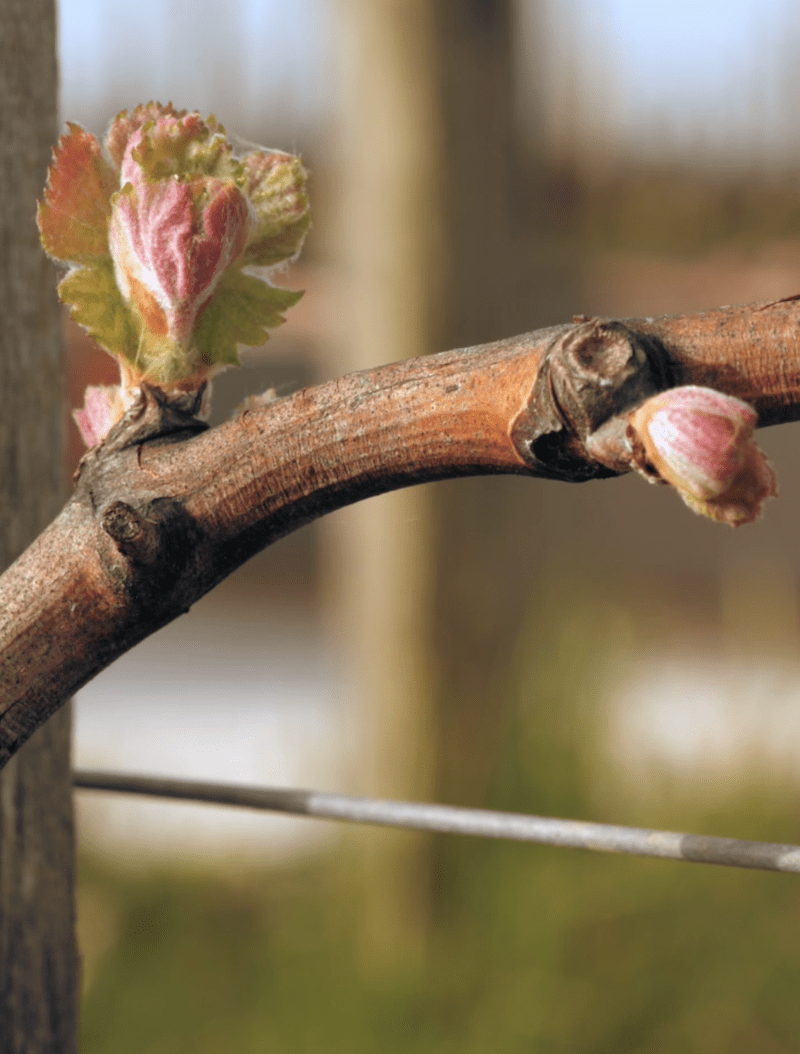
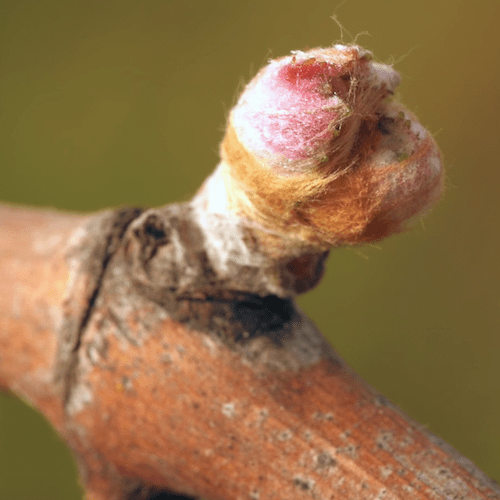
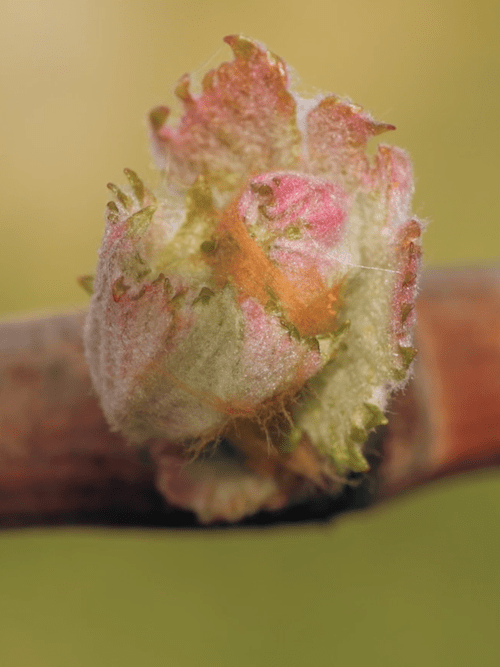

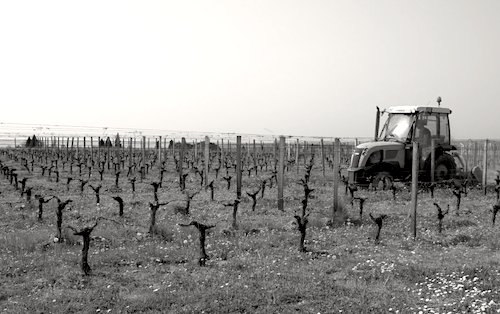
Soil preparation
After winter, it is important to aerate the clods of earth between the vines. Decapping is an essential step. Indeed, the presence of grass favors spring frosts and prevents a good sanitary state, the cavaillon must be maintained. This is one of the most delicate tasks in the maintenance of the vineyard. This work requires special attention.
This is the time of folding. The astes are attached to the wire to guide the branches.
With the spring sun and rains, the vines gain vigor and the leaf space grows at a high speed. In order to avoid exhausting the vine, the bottom branches of the vine are removed.
Then, it is the time of the lifting which consists in guiding the vegetation of the vine. The vine branches are tied up so that they grow straight and let a maximum of light through to the grapes.

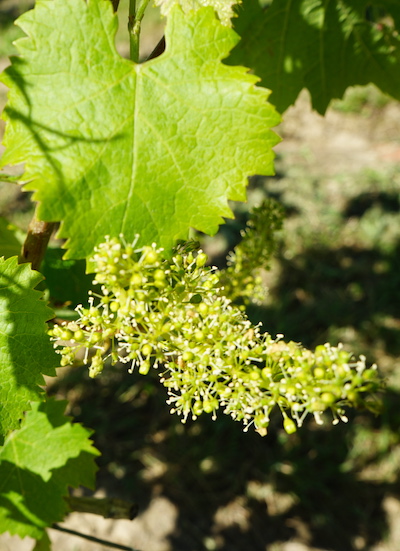

The summer

During the fruit set, the grapes begin to form in the fertilized flowers.
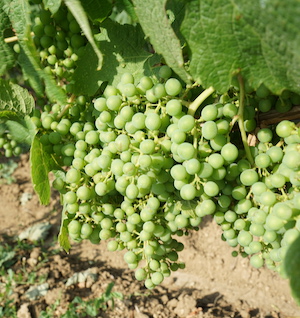
The berries will grow more or less quickly depending on the rainfall.
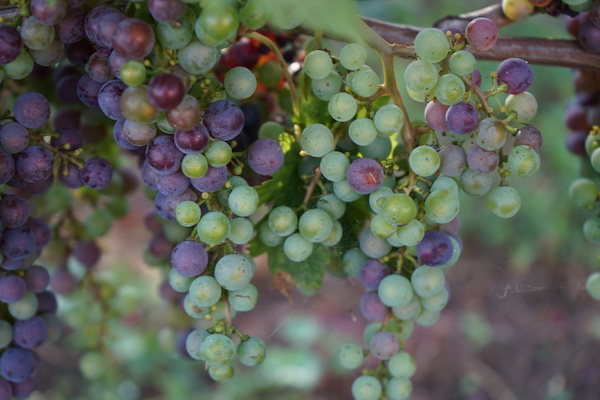
During the veraison, the berries change color giving multicolored clusters.
The veraison gives way to a second phase of growth which corresponds to the maturation of the grapes.
It lasts from 35 to 55 days, during which the grapes increase in volume. The grape accumulates mineral elements (such as potassium), amino acids, phenolic compounds (such as tannins, aroma molecules, anthocyanins responsible for the color of red grapes).
Ripening is also a phase of accumulation of sugars in the grapes. The sugars are effectively no longer used for the development of the fruit, but are stored in the grapes. These are the acids that will then serve as fuel for the energy needs necessary for their development
The variation in acid content is correlated with that of the climate. When the summer is hot, the tartaric acid decreases, as well as the malic acid. If the summer is cool, then the grapes are acidic.
